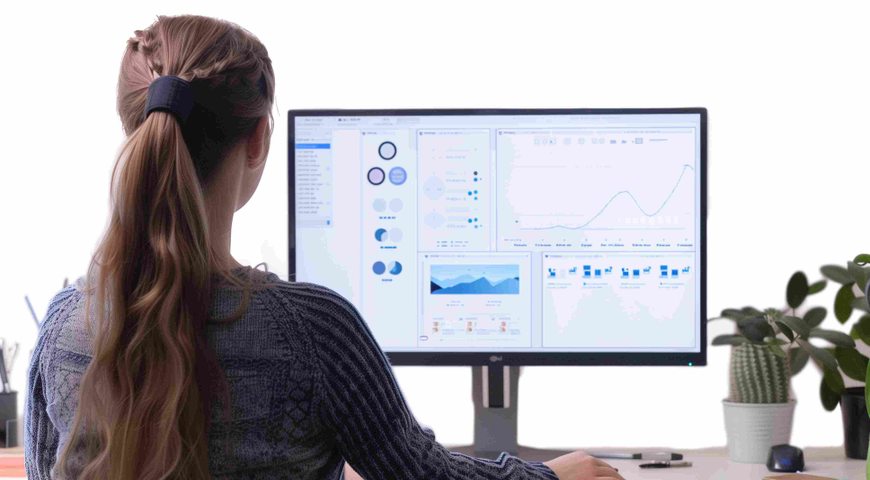
Nowadays, your data is one of your organization's most valuable assets, alongside your workforce and IT infrastructure. That's why business leaders like you want to ensure every piece of information is protected, accessible, and recoverable 24/7.
To provide you with such confidence and peace of mind, you need software tools that create a replica of your existing files, provide remote access, and ensure their recoverability in emergencies. However, here's where things get tricky: many business leaders assume Google Vault works like a data backup tool. They believe it protects them from data loss and helps them recover files quickly in the event of a disaster. Unfortunately, that's not what Vault does at all.
Google Vault is built for compliance and archiving — not for fast recovery or protection against data loss. Think of it like a filing cabinet for legal documents, not a safety vault for your valuables. When you need to restore deleted emails after a ransomware attack or recover files a user accidentally wiped out, Vault can't help you. It simply wasn't designed for that job.
This misunderstanding puts your data at serious risk. When you rely only on Google Vault, you get retention, archival, search, and export services. In other words, it helps your company manage the digital information lifecycle and meet legal requirements, but Google Vault can't p your precious data stored across your Google Workspace. For that reason, you need a reliable backup solution that can duplicate all your files in both physical and cloud environments, allowing you to restore them whenever needed.
Here's what this article will do for you: We'll clear up the confusion between archiving and backup, show you exactly what Google Vault can and can't do, and help you make smart decisions about protecting your Google Workspace data. By the end, you'll know why you might need both tools working together — and which backup solution gives you the best protection.
So let's not delay and get to work.
What is Google Vault used for?
Google Vault is a governance and eDiscovery tool that organizations use for legal compliance, data retention, and internal investigations within Google Workspace. It helps you search, preserve, and export your data, like Google Messages, Google Chat messages, emails, and files for use in legal proceedings. Google Vault is capable of automatically setting retention rules to preserve data for specific time periods, supports legal hold to prevent data deletion and eases internal audits.
The software is used for different purposes:
- Legal discovery: When a legal team needs to search and export users' specific communications related to a particular lawsuit, without wasting hours exploring hundreds of files. Vault allows you to directly search your specific information, including Google Meet recordings, Google Voice for Google Workspace calls, and associated chat Q&A sessions, helping you locate relevant information quickly, rather than wasting hours browsing to find it. The exported data can then be formatted for court proceedings or attorney review.
- Data retention: The data retention capabilities work automatically once you configure them. This means you might set rules to preserve Gmail messages for seven years, retain Google Chat messages for regulatory compliance, or keep Meet recordings and associated chat for audit purposes. Keep in mind that these retention rules work across all Google Workspace apps supported by Vault, including files in Drive, Google Groups messages and voicemails and their transcripts in Google Voice. What's more, even if you or some of your employees delete data from their view, Google Vault continues to preserve it behind the scenes on Google's servers. This protection can be applied to all your organizational units, enabling you to enforce different rules for different departments without causing any conflicts.
- Internal investigations: For internal investigations, Google Vault can be a reliable source of detailed information when you need to understand what happened during a security incident or policy violation. Google Workspace administrators can search through users' data following the Electronic Discovery Reference Model framework to piece together timelines and communications for legal proceedings.
But keep in mind that this is where many people get confused. Yes, Google Vault preserves data for compliance as a retention tool for Google Workspace. Still, it is not a disaster recovery tool or backup solution that can restore your systems after a cyberattack.
How does Google Vault work?
Google Vault works like a smart filing system for your data, but it only saves what you configure it to preserve across all your Google systems in advance. In other words, it is like your assistant who follows your rules and instructions strictly.
Here's how this tool actually works from the inside:
The technical process
Google Vault sits quietly in the background, monitoring your data flow across Google Workspace. When you add files or new information to your system, like an email, Google Workspace text messages, transcripts and call logs, or any uploaded file, Vault checks it and determines whether it should be stored or neglected based on your predefined retention rules. If the data matches these rules, it is automatically copied and stored on Google's servers until retention rules expire, without requiring any additional effort on your side.
Creating and managing rules
Google Vault must be configured according to your needs and requirements. Through its interface, you can specify exactly what types of information you want it to preserve and define the retention period before being automatically erased. These rules allow you to target specific organizational units, providing flexibility to apply different rules for your HR department and sales team, including the ability to delete sensitive data after specified timeframes for compliance purposes. This allows you to avoid data redundancy, unnecessary data uploads and privacy violations and ensures that the information preserved is categorized correctly.
Audit trail and tracking
The good news is that every action made by you or your employees gets logged automatically. So when someone searches for data, exports users' Google Workspace information, or modifies retention settings, the system creates a detailed audit trail, providing you with useful information in different situations. What's more, this tracking helps your compliance team prove to regulators or auditors that you're established and following data governance procedures properly. This saves you costly fines and penalties by providing proof that exported data matches the source records during audits.
The critical limitation
Although it is a very useful tool, Google Vault has one significant limitation by default: it only preserves data based on the rules that you created beforehand. This means that if you or some of your employees delete any important information before setting up retention rules, those files are permanently deleted, as Google Vault retains data only when preservation policies are active beforehand. Keep in mind that Google Vault is not a backup solution, and it doesn't offer file versioning capabilities. Individual users also can't restore files they have intentionally or unintentionally deleted, because there is no "restore" button or user-friendly interface that allows your employees to recover their own data. This can be done only by authorized users like administrators, who can search through other users' Google Workspace data preserved in Vault and manually export it, but this process isn't designed for everyday file recovery situations.
Google Vault cost breakdown
Google Vault is included in some Google Workspace plans but charges extra for others, and the long-term costs can add up quickly.
What's included and what costs extra?
If your company uses the Google Workspace Business Standard or Business Starter pack, you will need to pay extra for using Google Vault. In such a case, you will need to upgrade to Google Workspace Business Plus or Enterprise plans to get Vault at no additional cost. However, if you don't need to upgrade to the aforementioned plans, you can simply add Google Vault as an extra service for $5 per user account per month.
The hidden risk of license lapses
If you consider starting to use Vault as an extra service, but at some point you stop paying for Vault licenses or downgrade your Google Workspace edition, you won't just lose access to the tool but also lose all the data stored in it until that moment. In such a case, all of your preserved emails, files and Google Chat messages disappear immediately, and there is no way to recover them. Many users get frustrated after realizing that there's no grace period to download their stored information; their compliance records, legal hold, and retained data vanish instantly, so keep that in mind.
Long-term costs vs. backup solutions
Let's say you need to retain data for five years for a 100-person company. That would cost you $6,000 annually ($5 per user x 100 users x 12 months), meaning that over those five years, you will pay $30,000 to access Vault. Comparing these numbers to backup solutions, they seem way too expensive, since third-party backup vendors cost significantly less while providing actual recovery capabilities.
Moreover, these solutions protect all the data across your company, not only Google Workspace information, for less than what you'd pay to access Google Vault. That's why most of the companies around the world choose to use reliable third-party backup solutions, since these solutions offer you more flexibility, protect all of your data, and equip you with one-click recovery of entire databases and particular files at the same or even lower price.
Data loss scenarios Google Vault can’t prevent
Google Vault is a useful feature without any doubt, but since it is not a backup solution or a disaster recovery tool, it can't protect your data in unexpected situations like:
- Ransomware attacks: Once cybercriminals encrypt your database and business-critical applications, Vault becomes totally ineffective. The tool merely preserves whatever exists in your Google environment, and unfortunately, encrypted files remain encrypted within the preservation system. Believe it or not, many IT teams realize it the hard way, once they face an active attack. To recover your data, your company needs a backup and disaster recovery solution that keeps copies of your Google Workspace files or your entire database in an independent cloud environment. Only then can you restore all of your files as quickly as possible. In such a situation, Google Vault can't help you.
- Premature data deletion: What catches organizations unprepared for emergencies is Vault's inability to recover sensitive data deleted before retention policies are established and active. For instance, if some of your employees delete critical data in month two of your Google Workspace deployment, but you haven't implemented default retention rules until month six, then your information becomes irretrievable. Although this seems obvious in hindsight, it's a scenario that happens daily for companies of various sizes, especially across those rushing to implement compliance measures for their account management.
- Improper account management during offboarding: While Google Workspace allows you to archive users to preserve their data in Vault, many administrators mistakenly delete accounts entirely instead of using the archive function. This immediate deletion bypasses Vault's preservation capabilities and permanently removes associated data, even when legal holds should apply. The risk lies in human error during the offboarding process rather than Vault's technical limitations.
- Historical recovery remains fundamentally impossible: Central to Vault's limitations is its inability to restore data to point-in-time snapshots. Do you need your Google Workspace environment exactly as it was last quarter? This functionality simply doesn't exist. Yes, Vault keeps current data states, but it lacks the versioning capabilities that third-party backup and disaster recovery tools provide.
What Google Vault does well — and what it doesn’t
Like every software, Google Vault has its strengths and weaknesses, but let's explore them one by one:
Pros:
- eDiscovery and legal holds: As already stated, Google Vault is a useful tool for legal investigations, allowing your organization to retain and hold data for long periods to meet legal and compliance requirements.
- Data retention: It allows you to set retention policies that help you keep data indefinitely, even after one of your employees or a particular user deletes it.
- Search and export: As an eDiscovery tool for Google Workspace, Vault is highly effective and reliable when you need to hold, search and export data across supported services in different formats.
- Audit trail: The tool equips you with a detailed audit log of your employees' activity within Vault, which, of course, is highly important for accountability and compliance purposes.
- Access control: With Google Vault, you can adequately control which of your employees have access to the tool and what they can do with the tool.
Cons:
- Backup and restore: Google Vault does not offer backup and restore functions; it is simply not designed for these purposes. This limitation is one of the biggest disadvantages the software has, because in emergency situations, you won't be able to restore your critical data, which can put your business continuity at risk. It lacks critical capabilities like point-in-time restores, ransomware recovery, and full user account recovery.
- Limited coverage beyond core apps: While Google Vault covers the main Google Workspace applications, it struggles with data stored outside those core systems. Third-party integrations, non-supported files, or information in non-Google applications remain completely unprotected.
- Differential backups: The software lacks the ability to create differential backups or avoid data duplication. When you need to export data, you always have to double-check it.
Why backup is essential — even if you use Vault
You need a backup solution by your side to be confident that your data is protected and you won't be lost during unexpected situations. Nowadays, cyberattacks are more frequent than ever, hardware failures are an everyday occurence, and natural disasters have unfortunately become part of our lives. If you don't have a replica of your data, then you can't recover from any of these catastrophic events.
As already mentioned, Google Vault is an archiving and compliance tool, and it's safe to say that it has become an inevitable part of millions of enterprises around the world. However, it's just not designed to protect you from data loss. That's why you need a reliable backup and recovery solution that can help you in difficult situations, and Acronis Cyber Protect Cloud is a reliable option.
Here's how Acronis fills the gaps Vault can't:
Complete data protection beyond Google Workspace
It's now more than clear that Google Vault only handles basic Google Workspace data, but Acronis Cyber Protect Cloud protects over twenty different workload types. This means that your company receives coverage for Microsoft 365, Exchange servers, SQL databases, virtual machines, and even mobile devices like iPhones and Android phones. In other words, with Acronis, you are not stuck protecting just emails and Drive files, but you can safeguard every single piece of information stored on your endpoints, all from one platform.
Instant recovery when disasters strike
The software offers you something special: instant recovery capabilities that can get your systems running in seconds, not hours or days. This can save you hundreds of thousands of dollars in the event of a cyberattack, hardware failure, or natural disaster. With Acronis Instant Restore technology, you can start your Windows and Linux systems directly from backup storage without transferring massive amounts of data first, which is a huge advantage. This way, your employees can get back to work immediately while your IT team handles the full restoration in the background. Acronis not only allows you to recover instantly but also provides peace of mind knowing that, whatever the circumstances, your company won't lose its data and face the destructive consequences a single disaster can cause.
Advanced ransomware protection and safe recovery
The best thing about Acronis is that it not only backs up your data but also actively protects it from ransomware attacks in real-time using its AI-based Active Protection technology. The system monitors your systems and blocks encryption attempts before cybercriminals can damage your business, leaving you with a heartbreaking message stating that you must pay a ransom to regain control over your company. Additionally, when you restore from backups, Acronis automatically scans for malware and applies the latest antivirus updates, with the primary purpose of preventing the restoration of infected files back to your systems, which is highly important to eliminate the risk of experiencing the same cyberattack twice.
Continuous data protection for zero data loss
The problem with Google Vault is that it offers a static retention approach, but Acronis Cyber Protect Cloud provides continuous data protection, saving every change to your critical files instantly. Let's say an employee unintentionally deletes an important document at 2 PM; that's no longer a problem, since you can recover it precisely as it existed at 1:59 PM. This way, you can rest assured that your employees will never lose work-in-progress, even between scheduled backups.
Immutable backups that hackers can't touch
One of the best features of Acronis is that it creates immutable backups that cannot be encrypted or deleted during ransomware attacks. Even if cybercriminals somehow compromise your network, your backup data stays completely safe in secure cloud storage, giving you the confidence to recover quickly without paying the demanded ransom.
Everything Google Vault misses is being provided to you by Acronis
It's more than obvious that Google Vault can't restore point-in-time snapshots, recover deleted user accounts, or help you with hardware failures. But Acronis handles all these scenarios precisely; the software includes disaster recovery capabilities, universal restore to dissimilar hardware, vulnerability assessments, patch management, and even email security protection. Simply put, it equips you with 360 degrees of protection that keeps your business running no matter what happens.
It's safe to say that Google Vault preserves data for legal compliance, but Acronis Cyber Protect Cloud actually protects your business continuity. You can use both tools together, since they are not competing but complementing each other — use Vault for regulatory requirements and Acronis for real-world data protection that saves your business when disasters strike, and believe it or not, they happen more frequently than you might think.
Conclusion — Don’t mistake archiving for backup
Google Vault is used by millions of organizations worldwide and significantly eases many business processes, including legal discovery, data retention and internal investigations. However, it has its limitations, as does every piece of software. It can't back up your data, nor recover it when you need it most during cyberattacks, hardware failures or natural disasters. The biggest concern here is the fact that these significant weaknesses are unfortunately discovered by many business leaders when it's already too late.
For that reason, understanding the real difference between archiving and backup is highly important for the survival of your business. Google Vault excels at data governance by preserving information for legal discovery, regulatory compliance, and audit purposes. Still, when a disaster strikes and you need to restore operations quickly, Vault can't help you because it wasn’t designed for that purpose. It was never meant to serve as a recovery solution that brings your business back online.
So what your company really needs is a smart approach that combines Vault's strengths with genuine backup and recovery capabilities. Google Vault handles data governance with retention rules, legal holds, and audit trails. However, you also need a reliable backup solution like Acronis Cyber Protect Cloud that successfully creates a copy of your entire database, equips you with one-click recovery capabilities, protects your systems from ransomware, and last but not least, maintains your company's business continuity.
Acronis is your warranty that your systems can continue operating and swiftly recover when a disaster strikes; it simply fills every gap that Google Vault leaves, providing you with peace of mind knowing that you can restore your database and business-critical operations with just a few clicks, which minimizes downtime as much as possible.
If you are relying on Google Vault and haven't equipped your organization with a backup solution, do so now to avoid permanent data loss during incidents and significantly reduce the consequences of these unexpected situations. Visit our website to discover how Acronis Cyber Protect Cloud works by scheduling a demo today and see the difference real data protection makes. Rest assured that this small investment can save you not only thousands of dollars but also time and headaches.
About Acronis
A Swiss company founded in Singapore in 2003, Acronis has 15 offices worldwide and employees in 50+ countries. Acronis Cyber Protect Cloud is available in 26 languages in 150 countries and is used by over 21,000 service providers to protect over 750,000 businesses.



